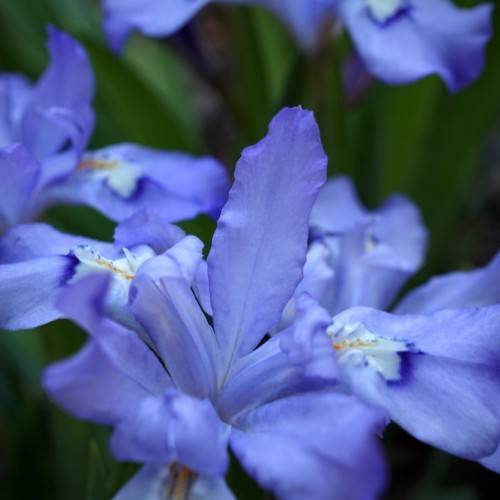
dwarf crested iris
Iris cristata
Cycle:
Herbaceous Perennial
Watering:
Average
Hardiness Zone:
3 - 9
Flowers:
Flowers In Spring
Sun:
Full sun,part shade
Leaf:
Yes
Growth Rate:
Low
Maintenance:
Moderate
Drought Tolerant:
Yes
Salt Tolerant:
Yes
Invasive:
Yes
Care Level:
Medium
watering
Water Dwarf Crested Iris plants sparingly and make sure the soil is well-draining. Water them during dry periods throughout the growing season, usually once a week if there is no rainfall. In hot climates, it's also important to reduce the amount of watering during the flower's dormant period to keep the plant from sprouting too early. During this time, water the plant only every 4-6 weeks. After raining, it's important to water the plant thoroughly and deeply to thoroughly hydrate the soil.
sunlight
Dwarf crested iris (Iris cristata) is a plant species that requires direct sunlight or full sun for optimal growth and bloom. It should receive at least 4-6 hours of sun each day from morning to mid-afternoon for best results. Dwarf crested iris can also tolerate partial sunlight or partial shade for a few hours a day if necessary but should not receive much shade over an extended period as this can cause the plant to struggle with blooming and becoming leggy.
pruning
Dwarf crested iris (Iris cristata) should be pruned annually for best results. Pruning should occur in early summer, just after the plants have finished blooming. Start by gently cutting back the stem and foliage to about 6 inches from the ground. Cut off any diseased, dead or damaged stems and leaves. Remove any leaves that appear yellow or malformed. If desired, you can divide larger clumps of Iris cristata in order to produce multiple plants. Doing this will also help promote healthy growth and blooms in the future. Finally, water the plant well after pruning to help ensure that it will regrow quickly.
